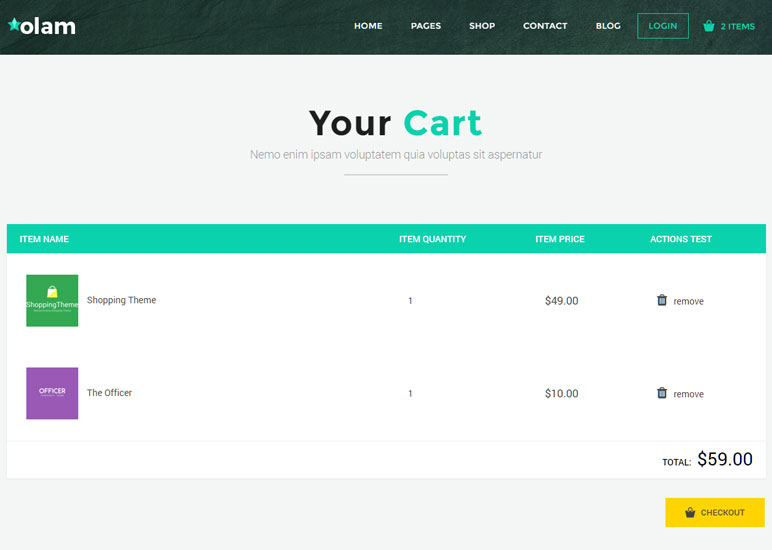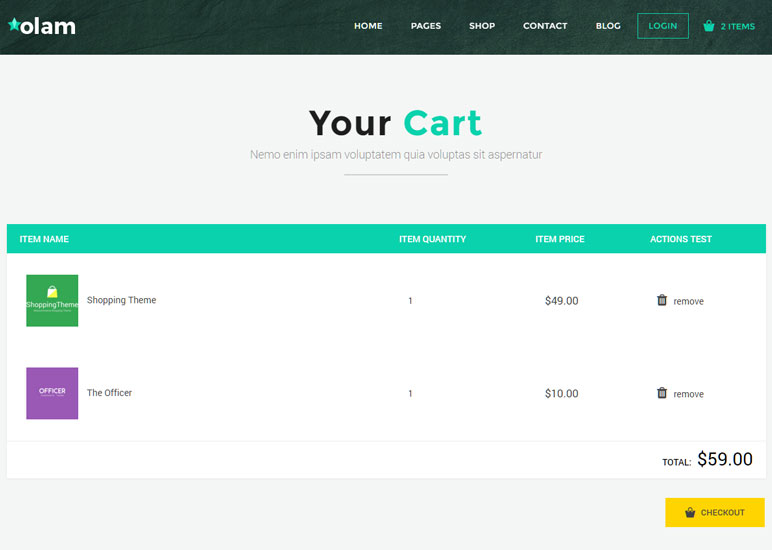
Selling products is one of the best ways to make passive income from your blog. Unlike other blog monetization methods like advertisements, by selling products you don’t necessarily need a huge traffic base in order to make a steady stream of income.
Personally, I prefer selling digital goods to physical goods. It’s because creating and selling digital goods are easy and convenient. For instance, if you’re a blogger like me, you could easily create a digital book by doing what you’re really good at—writing. Or else, if you’re a programmer, you can release a new plugin/software under your brand name, which wouldn’t be a tedious task at all.
Once you created a product, all you need to do is to upload it on your website and start selling.
In this post, I’ll explain everything you need to know about starting a digital storefront.
Creating a dedicated store vs. integrating a store with your current website or blog
When you’re planning to create a digital storefront, probably one of the first questions you’ll be asking yourself is how you should create a store— either by creating a store on a separate domain or by integrating a store with your current blog.
Creating a separate domain for your storefront lets you brand it uniquely and independently of any of your existing websites. However, the main disadvantage of this approach is that you’ll need to grow a customer base from scratch for the store.
In fact, if you have already grown a massive follower base for your blog or website, integrating a digital store with it would be a convenient choice in terms of promotion.
Creating a storefront
Start with installing Easy Digital Downloads
With all the technologies available today in the market, creating a store is not at all a hassle. For WordPress, all you need to do is to install a free digital store plugin like Easy Digital Downloads and roll out your first product for sale.
While there are lots of ecommerce plugins in the market like WooCommerce, EDD stands out from the rest because it was built specifically for creating a digital store. So you don’t find any unnecessary options while listing your products on your store.
Additionally, you can easily find many useful add-on plugins that could extend the features of your digital store.
Choose the right theme
One of the problems with rolling out a storefront with EDD or any other popular ecommerce plugins is that not every theme would support those plugins.
For that reason, you’ll need to find a right theme that supports your preferred ecommerce plugin; in this case, EDD plugin.
While choosing an EDD supported theme wouldn’t be an issue when you’re launching a brand new store, you might not want to change your current theme of your established blog just for the sake of integrating a storefront with it.
So if you’re integrating a store with your established blog, you will need to check if your current theme does support the plugin.
If your theme supports it, you can simply start a new page and start adding your products on it. If not, you’ll need to replace it with a supported theme.
But, what if you’re fond of your current theme and are not interested in changing it?
Instead of changing the entire theme, simply add a subdomain, install WordPress on it and find a suitable theme that works fine with your storefront.
Olam – Easy Digital Downloads Theme could be a nice choice as it is specifically built for creating a digital storefront. Best of all, Olam is compatible with some of the most popular EDD extensions like Commissions, Frontend Submissions, Wishlists, etc. so compatibility wouldn’t be an issue.
Choose appropriate addon plugins
When you’re creating a brand new storefront, most likely you’ll need to extend the features of your site. You can find tons of different EDD add-on plugins for that. All you need to do is to install the right add-on plugins that suit your needs.
Below are a few popular add-on plugins for a digital store.
- Free Downloads: Offering free downloads is one of the best marketing strategies to attract lots of potential customers for your digital store. Simply ask your users to enter their email address; you can send a download link to their email. It also includes full purchase tracking and automatic integration with various email marketing tools.
- Invoices: Invoices extension lets your customers easily create HTML based invoices which they can then print and use for VAT compliance.
- Stripe: This is one of the most popular EDD extensions. It allows you to accept credit card payment through your Stripe account. Though Stripe is a popular payment gateway, you don’t necessarily need to stick to it if you don’t already have an account. In fact, as an alternative, you can find tons of different supported payment gateways on EDD.
- Frontend Submissions: If you’re planning to release multiple products on your blog, chances are you may need this premium add-on plugin. It helps you easily turn your EDD powered site to a full-featured marketplace.
Selling digital products- recommended practices
#1: Design matters
Although you’re selling tangible goods on your store, the presentation of your products and overall design of your store is crucial for driving sales. If you’re selling ebooks, create professionally designed covers for each one of your ebooks. If you’re releasing a plugin or software, you may need to display screenshots of it in order to entice customers to make a purchase.
#2: Focus on selling to repeat customers
Did you know it is easier to sell to an existing customer than to new ones? In fact, studies show that the probability of selling to an existing customer is 60-70% whereas selling to a new prospect is 5-20%.
So if you’re focusing heavily on acquiring new customers while undervaluing the importance of selling to your existing customers, chances are you’re leaving a lot of money on the table.
How would you reach out to your existing customers?
- Segment your email list of your existing customers: If you haven’t started an email list, you might want to consider starting it. Once you created a list, segment your existing customers into a distinct group and start sending personalized emails targeting specifically them, which increases the likelihood of repeat purchase
- Remarketing: Remarketing is a cost-effective advertising method that allows you to show personalized ads targeting a specific category of people who are either your existing customers or potential customers who has recently shown an interest in your products.
#3: Setting up your affiliate program
There are many self-hosted affiliate software out there that let you easily set up an affiliate program for your store. However, marketers like Syed Balki suggest not using a self-hosted affiliate platform especially if yours is a new store.
It’s because comparing with a self-hosting affiliate platform third-party system offers better tracking and fraud detection. Additionally, when you’re joining a large affiliate network like ‘Commission Junction’ or ShareASale, your business get more exposure, which likely brings in more affiliates.
Over to you
Have you ever launched a digital storefront? Share your thoughts and experience with us by commenting below.
Read More at The Beginners’ Guide to Creating a Digital Storefront
from Web Design Ledger https://webdesignledger.com/beginners-guide-creating-digital-storefront/


No comments:
Post a Comment